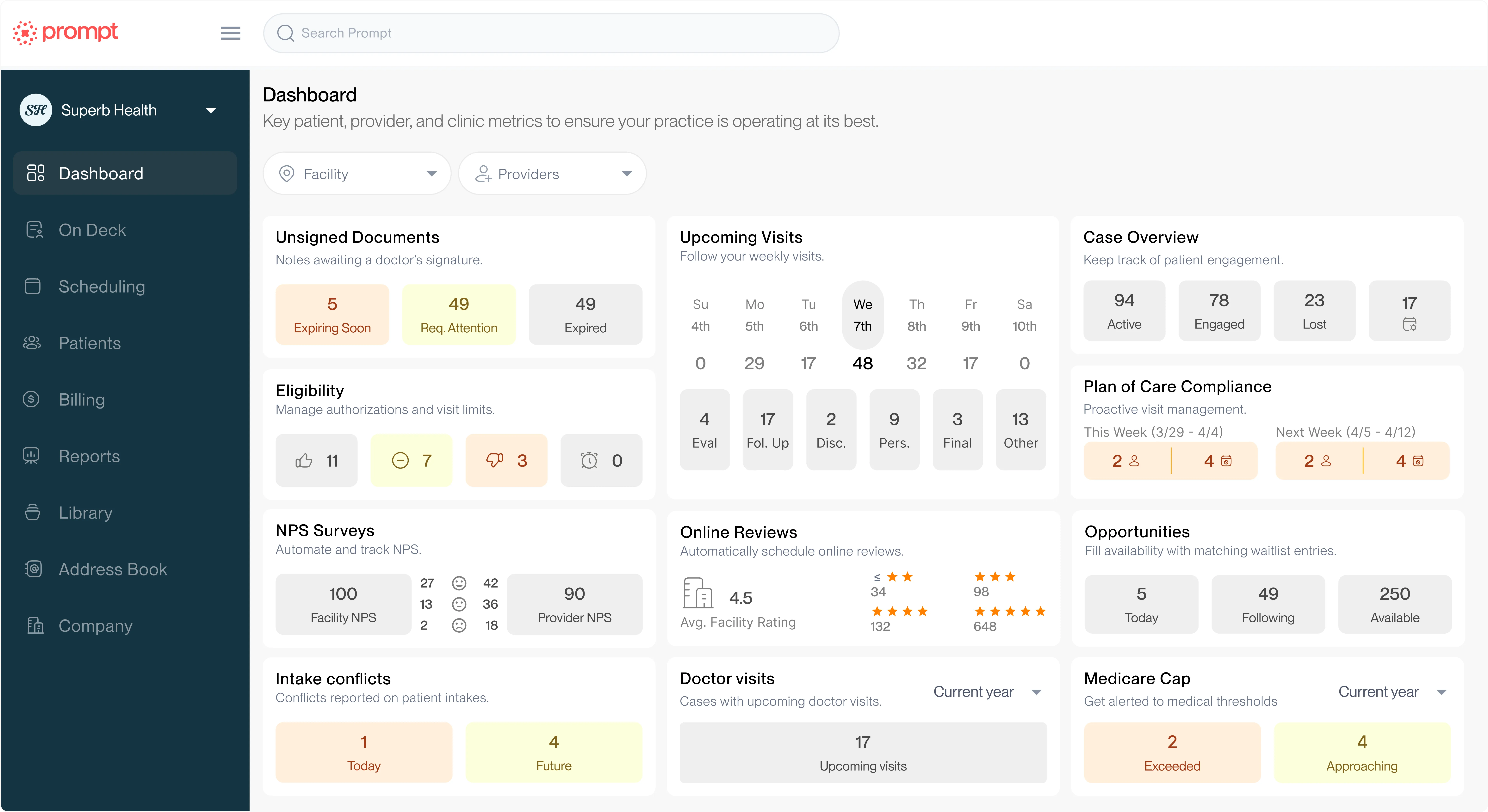See Prompt in action!


Switching to a variable compensation model in your PT or rehab therapy practice can feel like a big step. Many leaders wonder how employees will respond or whether the shift might impact culture, morale, or recruitment.
The truth is, most concerns about variable compensation models come from misunderstanding how these systems actually work. Practices across the country that have implemented Prompt Compensation (formerly OnusOne) have seen the opposite of what they feared: higher engagement, stronger collaboration, and more ownership among employees.
Here are 5 of the most common myths about variable compensation programs and the realities behind them.
In reality, variable compensation models often improve workplace culture. When goals and expectations are clear, employees feel more ownership over their outcomes and more control over their earning potential.
Some team members who may not align with organizational goals might decide the system isn’t the right fit, but for those who are invested, the shift is empowering.
Cyndi Hill, COO at Kinetic, didn't see any staff turnover when they implemented Prompt Compensation. "They just saw the opportunity," Cyndi says.
Now, Kinetic shows all new hires what options they have before they even start. "I pull up the three plans together and say, 'What do you want? What are you looking to make?' And I can map that out for them."
Employees gain autonomy, flexibility, and an immediate link between effort and reward. The result is a team that’s motivated, confident, and united around shared success.
A well-designed variable compensation program encourages collaboration, not rivalry. When everyone’s performance contributes to the company’s growth, teamwork becomes the smartest path forward.
Clinics using Prompt Compensation often report stronger cooperation among employees. Team members share strategies, support each other during busy times, and focus on delivering excellent patient care. When everyone contributes to a high-quality experience, both the company and the employees win.
Some people worry that variable pay will cause employees to focus only on numbers. In practice, the opposite happens. Variable compensation models allow practices to set customized productivity goals that reflect their values and mission.
Instead of one-size-fits-all standards, employees choose how productive they want to be while maintaining quality care. Built-in safeguards ensure that productivity never comes at the expense of patient outcomes or workplace balance.
Variable compensation models are actually one of the strongest recruiting and retention tools you can use. PT candidates value flexibility, autonomy, and the ability to influence their income, and implementing a variable compensation model offers all 3 of those things.
Clinics using Prompt Compensation often attract stronger applicants and retain high performers longer. That said, transparent communication during the hiring and onboarding process is key. When candidates understand how a model rewards growth and effort, they are more likely to see it as a professional advantage, not a risk.
Jason Wambold, founder of Compensation, has helped many clinics implement a variable compensation plan in their clinics.
He says, "Therapists very often are not comfortable negotiating. And you may very well lose a therapist simply because there was another offer somewhere else that you could have matched, but you weren't given the opportunity to, because this 24-year-old therapist just didn't understand how that process went. This is why offering [compensation] choices is so important."
If any employees do choose to move on when you decide to implement a variable compensation model, many practices discover that the remaining team members are happy to absorb those clients. It’s a natural alignment of capacity and ambition.
Systems like Prompt Compensation include built-in safeguards to protect profitability. Automated pay profile settings, benefit adjustments, and dynamic salary recalculations ensure that payroll costs stay aligned with revenue.
If clinic revenue dips during a slow period, the system adjusts automatically to maintain balance. This design keeps total salary costs sustainable while still rewarding performance.
In short, Compensation aligns financial outcomes for both the business and its employees. Everyone can share in clinic success without jeopardizing long-term business stability.
Many people are concerned that a variable compensation model will create instability in their clinic, but in fact, it creates opportunity. By linking performance to pay, employees gain ownership and motivation, and employers gain a transparent, scalable way to reward results.
When implemented thoughtfully, systems like Prompt Compensation can strengthen culture, increase accountability, and give teams the flexibility they’ve been asking for.
To see how you can implement this growth in your own clinic, schedule a demo today.
{{demo-cta-banner}}
Help your practice grow
From intake to insights, Prompt is the all-in-one platform you need